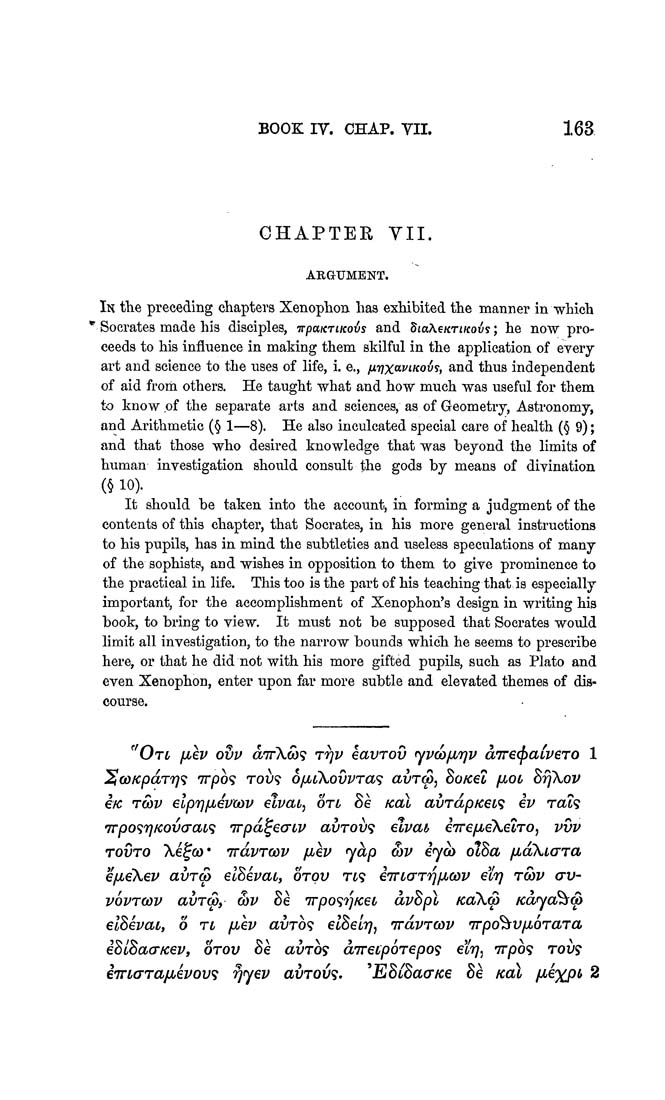book IV. CHAP. VIL
CHAPTER YII.
ARGUMENT.
In the preceding chapters Xenophon has exhibited the manner in which
^Socrates made his disciples, irpaKriKols and ^laKeKriKovs) he now pro¬
ceeds to his influence in making them skilful in the application of every
art and science to the uses of life, i. e., )U97xavi/couy, and thus independent
of aid from others. He taught what and how much was useful for them
to know of the separate arts and sciences, as of Geometry, Astronomy,
and Arithmetic (§ 1—8). He also inculcated special care of health (§ 9);
and that those who desired knowledge that was beyond the limits of
human investigation should consult the gods by means of divination
(§10).
It should be taken into the account, in forming a judgment of the
contents of this chapter, that Socrates, in his more general instructions
to his pupils, has in mind the subtleties and useless speculations of many
of the sophists, and wishes in opposition to them to give prominence to
the practical in life. This too is the part of his teaching that is especially
important, for the accomplishment of Xenophon's design in writing his
book, to bring to view. It must not be supposed that Socrates would
limit all investigation, to the narrow bounds which he seems to prescribe
here, or that he did not with his more gifted pupils, such as Plato and
even Xenophon, enter upon far more subtle and elevated themes of dis¬
course.
''Ot6 ptev odv dTrX&s Tyv eavTov yv&ptyv dTrecpaiveTO 1
ScoKpdTys TTpbs TOVS bpttXovvTas avTcp, SoKel ptot SfjXov
iK T&v elpyptevxov elvat, OTt Se Kal avTapKets iv Tals
TTposyKovaats Trpd^eatv avTovs elvat iTrepteXelTo, vvv
TOVTO Xi^co* TrdvTcov ptev ydp &v iyco otSa ptdXtaTa
epteXev avT& elSivat, otov Tts iTrtaTrjptcov ety t&v av-
vbvTCOv avTcp, &v Se irposrJKet dvSpl KaXcp Kdya^&
elSivaL, b TL ptev avTbs eiSely, TrdvTcov Trpo^vptoTaTa
iSlSaaKev, otov Se avTos dTretpoTepos ety, TTpbs tovs
eTTLaTaptivovs ^yez' avTOVS. ^ESiSaaKe Se Kal pti'xpf* 2
|








